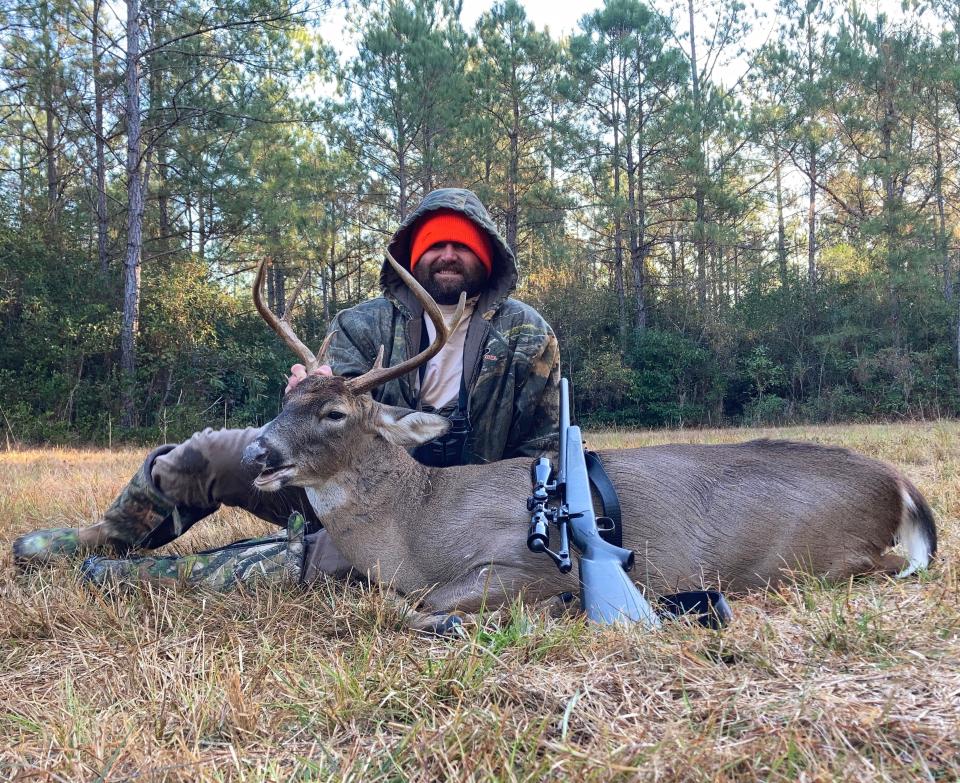Chronic wasting disease in deer is steadily spreading east, and Florida is not immune

For 20 years, Sampson County, North Carolina, has been my hunting home-away-from-home. Invitations here from close friends who lease and own farmland have allowed me to bag more deer than I can recall, for which I'm eternally grateful.
Now, another serious threat to the local whitetail population has entered the field – chronic wasting disease.
If you’re a hunter, you’re likely well-versed in CWD, but for others, this is a neurodegenerative disorder found in deer species caused by an abnormal protein known as a prion. These prions accumulate in brain cells, eventually killing the animal. It’s spread primarily through direct animal contact but is also transmitted through contaminated soils and plants. Once settled within an environment, these prions are nigh-impossible to eradicate.
Freshwater fishing in Polk: Specks and some bass are moving shallower as temperatures cool
Fortunately, it hasn’t jumped to people like the similar prion-based Creutzfeldt-Jakob disease, a variant of Mad Cow Disease. But for deer, CWD has had a foothold in western and midwestern states for decades, and its spread has steadily marched east. Today, 32 states have reported it in free-ranging herds, and it’s the bane of biologists and game managers throughout the country, as they race to monitor and impede its advance.
With the dense populations of whitetails throughout the South, this might be a quixotic quest. CWD was first detected in northwest North Carolina in March 2022. As a response, the wildlife commission increased their surveillance efforts during the following hunting season. Sure enough, a hunter-harvested deer was identified as CWD-positive in October 2022 in Cumberland County in the southeast corner of the state and which neighbors Sampson County.
Wayward bears Florida lawmakers want version of 'stand your ground' law for lethal force against bears
Accordingly, Sampson County was designated a Secondary Surveillance Area, meaning successful hunters had to submit biological samples for testing through the height of gun season in mid-November. Hunters were also encouraged to bury carcasses or, at the least, deposit them from whence they came. Rules regarding baiting in surveillance areas and transporting dead deer in and out of them were also modified.
While new regulations are an unwelcome but necessary burden, they buy game managers time and data, studying what remains a poorly understood disease. To stay in the sunshine, North Carolina has posted the results of their biological tests online. So far, Sampson County hasn't registered any positives, but the walls are closing in, I fear.
Out west Mule deer population declining while whitetail deer moving in and increasing
Fortunately, rules also adapt as biologists attain a deeper grasp of the situation. In Pennsylvania, which has coped with CWD since 2012, the restrictions are being relaxed, now allowing "high-risk" boned-in venison and trophy heads to be taken to commission-approved processors and taxidermists from deer harvested from in or out of the state. This process ensures proper disposal and increases monitoring efforts while lessening burdens on hunters seeking to maximize their venison yield or having their Big Buck mounted by a local taxidermist.
While Sampson County has so far been my primary personal point of impact with CWD, the Florida Panhandle clocked its first case from a road-killed deer in June. Similar to North Carolina's efforts, all deer harvested Dec. 9-10 in Holmes, Jackson, and Washington counties had to be checked at a staffed station.
I would expect monitoring efforts to expand across the state in coming seasons.
(For more information on CWD, please visit myfwc.com/research/wildlife/health/white-tail-deer/cwd/)
This article originally appeared on The Ledger: As deadly deer disease spreads, Florida's not immune | Hunting

